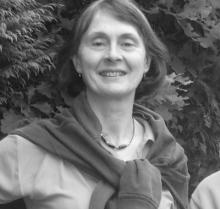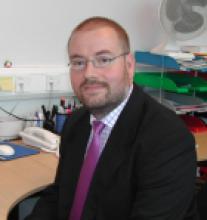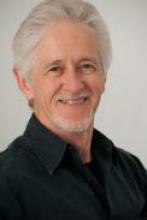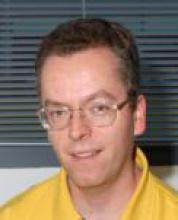- Home
- About
- Partners
- Newcastle University
- University of L'Aquila
- University of Manchester
- Alacris Teranostics GmbH
- University of Pavia
- Polygene
- Consiglio Nazionale delle Ricerche
- INSERM
- Certus Technology
- Charité Universitaet Medizin
- GATC Biotech
- University Medical Center Hamburg Eppendorf
- Evercyte GmbH
- University Hospital of Cologne
- PRIMM Srl
- University of Freiburg
- University of Antwerp
- Finovatis
- Research
- SYBIL at a glance
- Bone
- Growth plate
- Desbuquois dysplasia
- Diastrophic dysplasia
- MCDS
- Osteopetrosis
- Osteoporosis
- Osteogenesis imperfecta
- Prolidase deficiency
- PSACH and MED
- Systems biology
- SOPs
- Alcian Blue staining
- Bone measurements
- BrdU labelling
- Cell counting using ImageJ
- Chondrocyte extraction
- Cre genotyping protocol
- DMMB assay for sulphated proteoglycans
- Densitometry using ImageJ
- Double immunofluorescence
- Electron microscopy of cartilage - sample prep
- Extracting DNA for genotyping
- Grip strength measurement
- Histomorphometry on unon-decalcified bone samples
- Immunocytochemistry
- Immunofluorescence
- Immunohistochemistry
- Quantitative X-ray imaging on bones using Faxitron and ImageJ
- Skeletal preps
- TUNEL assay (Dead End Fluorimetric Kit, Promega)
- Toluidine Blue staining
- Toluidine Blue staining
- Von Kossa Gieson staining
- Wax embedding of cartilage tissue
- Contact Us
- News & Events
- Links
- Portal
University of Manchester
 Established in 1824, the first and most eminent of the English civic universities, The University of Manchester has long been a centre for ground-breaking research and scholarship. Their many Nobel prizes in the sciences and economics have been complemented by significant achievements in the arts, medicine, engineering, computing and radio astronomy. We continue to advance as a global centre of education and innovation, but are also committed to local and regional engagement. Facultu of Life Sciences at University of Manchester has a global reputation for research and comprises over 230 academic staff. It is recognised as an international site of excellence in terms of research power and named in the top threee UK Biology groupings in the 2008 RAE.
Established in 1824, the first and most eminent of the English civic universities, The University of Manchester has long been a centre for ground-breaking research and scholarship. Their many Nobel prizes in the sciences and economics have been complemented by significant achievements in the arts, medicine, engineering, computing and radio astronomy. We continue to advance as a global centre of education and innovation, but are also committed to local and regional engagement. Facultu of Life Sciences at University of Manchester has a global reputation for research and comprises over 230 academic staff. It is recognised as an international site of excellence in terms of research power and named in the top threee UK Biology groupings in the 2008 RAE.
University of Manchester roles in SYBIL
UNIMAN will provide the core qualitative systems biology analyses for the consortium and provide training for consortium members therein. UNIMAN will provide iPS generation and differentiation expertise (to chondrocytes and osteoblasts) (WP2), it will also provide a knock in mouse model and develop cell models for MCDS (WP2-3). Models will be characterised and deep phenotyped (WP4). Data will be supplied for systems analysis (WP 6). Biomarkers will be sought and potential therapies will be tested in cell lines and in vivo where appropriate (WP7-8).
Facilities available at UNIMAN include bioimaging, bioinformatics (expertise in microarray and proteomics analysis), biomolecular analysis and mass spectrometry, transgenic mouse facilities, electron microscopy, flow cytometry, genomic technologies (Affymetrix GeneChip, next generation sequencing), histology and a protein expression facility.
UNIMAN researchers involved in SYBIL
 Prof Sue Kimber – Professor of Stem Cells and Development in the Faculty of Life Sciences University of Manchester. She has 25 years experience as a developmental biologist working on early development of mammalian embryos. She is also an established international expert on mammalian implantation with a research programme in this area leading to over 40 papers. In the last 20 years, thirty of her almost 100 papers address issues of establishment of the blastocyst and the inner cell mass (ICM) the source of embryonic stem cells as well as the first differentiation of the embryonic stem cell population to trophectoderm or later the primary embryonic precursor cells (germ layers) in both murine and human embryos. She is co-director of the North West Embryonic Stem Cell Centre jointly hosted by the Univeristy of Manchester (UoM), and Central Manchester NHS Trust (CMMCUHT). NWESCC spans two sites, at St Mary’s Hospital [CMMCUHT] and in the Core Technology Faciltity (UoM), and encompasses both clinical and academic expertise. The remit of the Centre (funded by NWDA and MRC) is to establish human embryonic stem (hES) cell lines under clean room conditions suitable for therapeutic use.
Prof Sue Kimber – Professor of Stem Cells and Development in the Faculty of Life Sciences University of Manchester. She has 25 years experience as a developmental biologist working on early development of mammalian embryos. She is also an established international expert on mammalian implantation with a research programme in this area leading to over 40 papers. In the last 20 years, thirty of her almost 100 papers address issues of establishment of the blastocyst and the inner cell mass (ICM) the source of embryonic stem cells as well as the first differentiation of the embryonic stem cell population to trophectoderm or later the primary embryonic precursor cells (germ layers) in both murine and human embryos. She is co-director of the North West Embryonic Stem Cell Centre jointly hosted by the Univeristy of Manchester (UoM), and Central Manchester NHS Trust (CMMCUHT). NWESCC spans two sites, at St Mary’s Hospital [CMMCUHT] and in the Core Technology Faciltity (UoM), and encompasses both clinical and academic expertise. The remit of the Centre (funded by NWDA and MRC) is to establish human embryonic stem (hES) cell lines under clean room conditions suitable for therapeutic use.
 Prof Roy Goodacre – Roy's research interests are broadly within analysitical biotechnology and systems biology. He has over 18 years of experience of advanced data analsis applied to spectroscopic, mass spectrometric and metabolomic data; over 18 years of experience in mass spectrometry (MS) and over 11 years in vibrational spectroscopy. Roy has published over 180 peer-reviewed papers and had co-edited books on metabolic profiling and systems biology. He is the Editor-in-chief of the journal Metabolomics and on the editorial board of the Journal of Analytical and Applied Physics. Finally, he is a founding director of the Metabolomics Society and director of the Metabolic Prolifing Forum.
Prof Roy Goodacre – Roy's research interests are broadly within analysitical biotechnology and systems biology. He has over 18 years of experience of advanced data analsis applied to spectroscopic, mass spectrometric and metabolomic data; over 18 years of experience in mass spectrometry (MS) and over 11 years in vibrational spectroscopy. Roy has published over 180 peer-reviewed papers and had co-edited books on metabolic profiling and systems biology. He is the Editor-in-chief of the journal Metabolomics and on the editorial board of the Journal of Analytical and Applied Physics. Finally, he is a founding director of the Metabolomics Society and director of the Metabolic Prolifing Forum.
Wellcome Trust Centre for Cell Matrix Research
 The Wellcome Trust Centre for Cell-Matrix Research is an interdisciplinary research centre embedded within the Faculty of Life Sciences at the University of Manchester. The Centre was established in 1995, supported by a generous grant from the Wellcome Trust, with the long-term aims of elucidating the structure and function of extracellular matrices and cell-matrix adhesions, defining the contributions of cell-matrix interactions to human diseases, and developing approaches for preventing and treating these diseases. Initially, under the chairmanship of Professor Mike Grant, the Centre comprised 16 research groups with a total of 80 research staff. The Directorship of the Centre passed to Professor Martin Humphries in 2000, then to Professor Charles Streuli in late 2009. In January 2004 the Centre relocated to the new Michael Smith building, named after a former graduate of the University of Manchester and 1993 Nobel Laureate in Chemistry. The Cell-Matrix Centre consists of 20 research teams. Their basic biology research is conducted by around 40 postdoctoral fellows and 50 PhD students, and is supported by about 20 technicians and support staff. Altogether the Centre is a large and productive international research group of around 130 scientists.
The Wellcome Trust Centre for Cell-Matrix Research is an interdisciplinary research centre embedded within the Faculty of Life Sciences at the University of Manchester. The Centre was established in 1995, supported by a generous grant from the Wellcome Trust, with the long-term aims of elucidating the structure and function of extracellular matrices and cell-matrix adhesions, defining the contributions of cell-matrix interactions to human diseases, and developing approaches for preventing and treating these diseases. Initially, under the chairmanship of Professor Mike Grant, the Centre comprised 16 research groups with a total of 80 research staff. The Directorship of the Centre passed to Professor Martin Humphries in 2000, then to Professor Charles Streuli in late 2009. In January 2004 the Centre relocated to the new Michael Smith building, named after a former graduate of the University of Manchester and 1993 Nobel Laureate in Chemistry. The Cell-Matrix Centre consists of 20 research teams. Their basic biology research is conducted by around 40 postdoctoral fellows and 50 PhD students, and is supported by about 20 technicians and support staff. Altogether the Centre is a large and productive international research group of around 130 scientists.
WTCCMR researchers involved in SYBIL
 Prof Ray Boot-Handford – Work in my lab is focused on answering three questions relating to the structure and function of cartilage in development and disease. Firstly: What is the function of the novel cartilage collagen – type XXVII collagen? We have recently found that significant deletions in the collagenous domain of collagen XXVII cause a profound chondrodysplasia and a lung developmental defect in gene targeted mice (unpublished observations). The second question we are focusing on is: What is the role of ER stress in the pathogenesis of diseases mediated by chondrocytes such as chondrodysplasias and osteoarthritis? We have shown an association of ER stress with disease pathology using cell culture and in-house generated knock-in mouse models of chondrodysplasia caused by mutations in cartilage ECM genes. Furthermore, by generating novel transgenic lines in which elevated ER stress (caused by the expression of a non-secreted, ER stress-inducing protein) is targeted to relevant chondrocytes in vivo by use of the collagen X or II promoter, we have demonstrated the capability of ER stress to induce chondrodysplasia. Our current efforts are focused on genetically dissecting out the roles of different ER stress pathways in disease pathogenesis using a series of conditional ER stress-related mouse lines crossed with our own chondrodysplasia lines.Thirdly, we are using cell culture and in vivo models to test: Does alleviating ER stress by various pharmacological interventions reduce disease severity?
Prof Ray Boot-Handford – Work in my lab is focused on answering three questions relating to the structure and function of cartilage in development and disease. Firstly: What is the function of the novel cartilage collagen – type XXVII collagen? We have recently found that significant deletions in the collagenous domain of collagen XXVII cause a profound chondrodysplasia and a lung developmental defect in gene targeted mice (unpublished observations). The second question we are focusing on is: What is the role of ER stress in the pathogenesis of diseases mediated by chondrocytes such as chondrodysplasias and osteoarthritis? We have shown an association of ER stress with disease pathology using cell culture and in-house generated knock-in mouse models of chondrodysplasia caused by mutations in cartilage ECM genes. Furthermore, by generating novel transgenic lines in which elevated ER stress (caused by the expression of a non-secreted, ER stress-inducing protein) is targeted to relevant chondrocytes in vivo by use of the collagen X or II promoter, we have demonstrated the capability of ER stress to induce chondrodysplasia. Our current efforts are focused on genetically dissecting out the roles of different ER stress pathways in disease pathogenesis using a series of conditional ER stress-related mouse lines crossed with our own chondrodysplasia lines.Thirdly, we are using cell culture and in vivo models to test: Does alleviating ER stress by various pharmacological interventions reduce disease severity?
 Prof Tim Hardingham – We are investigating gene expression changes in human articular cartilage and fibrocartilage associated with ageing and pathology, which drive the processes that lead to tissue degeneration and arthritis and we have an active programme in cartilage tissue engineering. Array analysis of chondrocytes and OA tissue has identified genes regulated by SOX9 that are associated with osteoarthritis and we showed that a matrix forming phenotype was re-initiated in isolated chondrocytes from OA tissue when retrovirally transduced with SOX9. Increased expression of SOX9 in these cells potentiated an anabolic response to 3D cell culture, growth factors and hypoxia and showed that chondrocyte from OA joints were able to recover these responses and behave similarly to cells from healthy joints. To generate cartilage we are investigating the physical cues and biological signals that drive the differentiation of chondrocytes from stem cells of different origins, including from bone marrow, infrapatellar fat pad and from human ES cells. We are dissecting signaling pathways associated with chondrogenesis in order to make cartilage constructs more efficiently in vitro, or alternatively to deliver appropriate signals in vivo to drive chondrogenesis in cartilage repair.
Prof Tim Hardingham – We are investigating gene expression changes in human articular cartilage and fibrocartilage associated with ageing and pathology, which drive the processes that lead to tissue degeneration and arthritis and we have an active programme in cartilage tissue engineering. Array analysis of chondrocytes and OA tissue has identified genes regulated by SOX9 that are associated with osteoarthritis and we showed that a matrix forming phenotype was re-initiated in isolated chondrocytes from OA tissue when retrovirally transduced with SOX9. Increased expression of SOX9 in these cells potentiated an anabolic response to 3D cell culture, growth factors and hypoxia and showed that chondrocyte from OA joints were able to recover these responses and behave similarly to cells from healthy joints. To generate cartilage we are investigating the physical cues and biological signals that drive the differentiation of chondrocytes from stem cells of different origins, including from bone marrow, infrapatellar fat pad and from human ES cells. We are dissecting signaling pathways associated with chondrogenesis in order to make cartilage constructs more efficiently in vitro, or alternatively to deliver appropriate signals in vivo to drive chondrogenesis in cartilage repair.
 Dr Jean-Marc Schwarz – Biology was dominated until recently by the reductionist approach, consisting in the thorough study of individual biochemical compounds. However, new technologies allow experimentalists to gather rapidly increasing amounts of data at the scale of the entire cell, and a key challenge for biology is now to integrate and exploit these data in order to advance towards a global understanding of biological functions. The new field of Systems Biology seeks to explain macroscopic phenotypes by the use of chemical and physical models embedding detailed knowledge of the quantities, dynamics and interactions between intracellular compounds. New algorithms and solutions are required for data integration, network analysis, model construction and simulation. In this framework, our research projects encompass the constraint-based analysis of metabolic networks, integrative and dynamic modelling and systems pharmacology and drug metabolism.
Dr Jean-Marc Schwarz – Biology was dominated until recently by the reductionist approach, consisting in the thorough study of individual biochemical compounds. However, new technologies allow experimentalists to gather rapidly increasing amounts of data at the scale of the entire cell, and a key challenge for biology is now to integrate and exploit these data in order to advance towards a global understanding of biological functions. The new field of Systems Biology seeks to explain macroscopic phenotypes by the use of chemical and physical models embedding detailed knowledge of the quantities, dynamics and interactions between intracellular compounds. New algorithms and solutions are required for data integration, network analysis, model construction and simulation. In this framework, our research projects encompass the constraint-based analysis of metabolic networks, integrative and dynamic modelling and systems pharmacology and drug metabolism.


